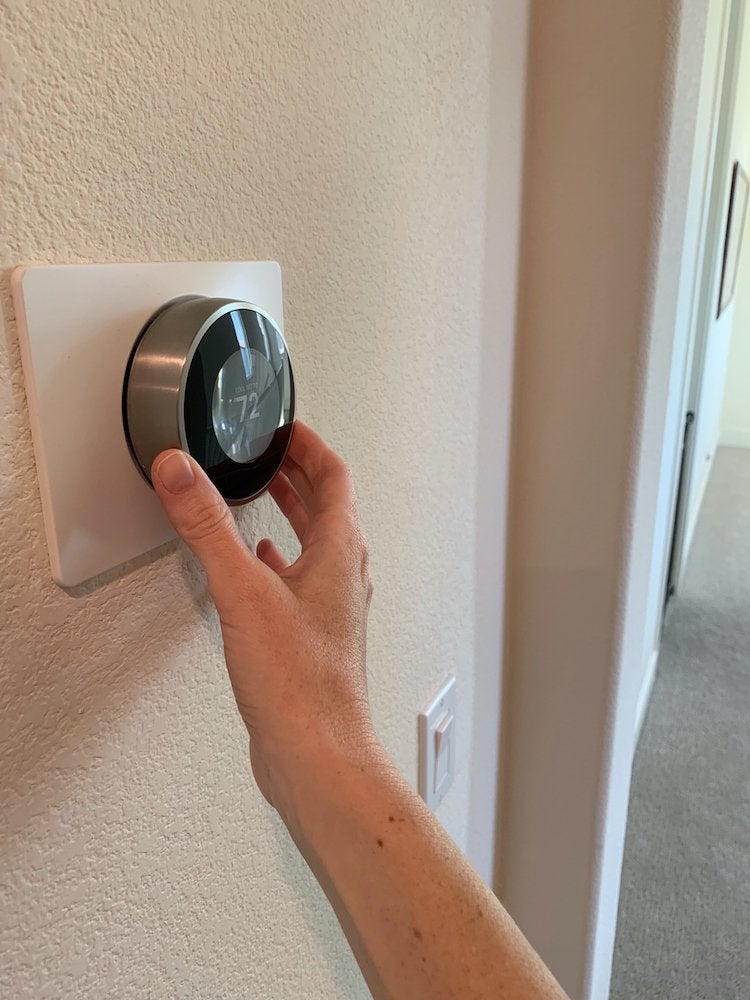

We may earn revenue from the products available on this page and participate in affiliate programs. Learn More ›
Home Advice You Can Trust
Tips, tricks & ideas for a better home and yard, delivered to your inbox daily.
Put Your House on an Energy Diet

Running a house takes a lot of energy—literally. From charging devices to running the AC, so many aspects of daily life requires power. If your most recent utility bills have you thinking it’s time to put your house on a diet then try implementing these energy-saving ideas. They don’t require a drastic lifestyle change and they are easy to quickly implement, so you can start seeing those savings.
Unplug Your Gadgets

Just because an appliance is turned off that doesn’t mean it’s not drawing power. According to the energy experts at Cornell University,”vampire power” costs consumers $30 billion a year—or about $200 per household. Unplug devices and appliances like ph
one
chargers
, l
aptops, and toasters when they are not in use (or once they are fully charged).
Adjust the Water Heater Temperature

Lowering the thermostat setting on your water heater is an easy way to save money; for each 10ºF you decrease the temperature, you can save 3%–5% in energy costs. Some manufacturers set water heater thermostats at 140ºF, but a temperature of 120ºF is more than sufficient for most households. Check and reset yours if necessary.
Change Filters

A dirty air filter means your HVAC system has to work even harder to function, thus using more energy. You can make sure it works efficiently by changing the filter. It’s important to note that different
filters
require different actions; fiberglass filters should be replaced monthly throughout the heating season, while permanent filters should be cleaned regularly.
Opt for the Dishwasher

You might think you’re saving energy by hand-washing dirty dishes rather than using a big appliance, but dishwashers actually use less hot water than letting the tap run as you scrub. When it’s time to clean dishes, don’t rinse them before loading and be sure to fill your
dishwasher
to its capacity before running. Save more by opening the door after the final rinse to let dishes air-dry naturally. And if you can, run the machine at night to benefit from off-peak rates.
Choose Cold Cycle

About 90% of the energy used to wash clothes goes toward heating the hot- and warm-water cycles. With the advances in washers and laundry detergents, it’s possible to get both white and colored clothes perfectly clean in cold water. Opt for the cold cycle whenever possible.
Program Your Thermostat

A programmable thermostat—one that adjusts the temperature when you are away from home—can save you about 10% a year on heating and cooling costs. Replace your standard thermostat with a programmable model (or even upgrade to a smart thermostat), so you can take control of the temperature.
Fix Those Leaks

According to the Environmental Protection Agency the average household’s leaks can account for nearly 10,000 gallons of water wasted every year. Not only is that terribly wasteful, but an ignored leak can lead to bigger plumbing problems. Regularly check all of your
faucets
for leaks, and when you discover them, fix them yourself or get them fixed as quickly as possible.
Circulate Air

You can pay anywhere from 36 cents per hour to operate a room air conditioner, but a ceiling fan will cost roughly a penny for the same amount of time. While a ceiling fan won’t cool a room the same way AC does, it will circulate the air and create a breeze. And don’t think that ceiling fans are only effective in the hot summer months. Reverse the direction during the winter to recirculate warm air collecting near the ceiling.
Go Low Flow

According to the EPA’s WaterSense, Americans use more than 1.2 trillion gallons of water while showering, marking it as one of the country’s top residential water uses. Low-flow shower heads and faucet aerators allow you to save resources without sacrificing water pressure. By installing one you can save up to 2,700 gallons per year, and more than 330 kilowatt hours of electricity annually since there’s less demand on the water heater. Another simple idea to cut back on water waste? Set a timer for shorter showers.
Use Better Bulbs

If you replaced your home’s five most frequently used light fixtures or bulbs with ENERGY STAR-certified lights, you could save as much as $75 each year, according to the U.S. Department of Energy. As your incandescent bulbs burn out, replace them with-efficient bulbs. They use 80% less energy and can last 3-25 times longer.
Seal Air Leaks

ENERGY STAR estimates that you can save up to 20% on heating and cooling costs (or up to 10% on your total annual energy bill) by making sure your home is adequately sealed and insulated. Be sure to seal leaks around windows, doors, electrical outlets and elsewhere with weatherstripping and caulk.
One Less Flush

Toilets use about 30% of your home’s indoor water consumption. And if you have older models, they could use up to six gallons of water per flush! If you replace your inefficient toilets with WaterSense labeled ones, your household can save nearly 13,000 gallons of water every year. If you aren’t ready to buy new toilets consider retrofitting your current toilet tanks with water-conserving kits.

This Is the Year for a Kitchen Renovation
Whether you’re selling or staying, everyone can get something out of a kitchen update. Learn why we consider this renovation the Most Valuable Project of 2025 and how to stay on budget.
